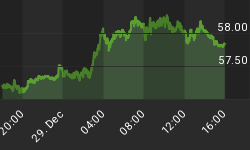The United States Treasury Department has supported a strong dollar policy since its inception in 1789. Period. There were no qualifications or equivocations with that stance, especially since the ascendance of the dollar as the world's reserve currency. That's why it was so highly unusual when the newly confirmed Treasury Secretary, Steven Mnuchin, uttered this quote recently: "From time to time an excessively strong dollar could have a negative short-term effect on the economy."
Ostensibly, the U.S. claims a strong dollar is in the best interest of the nation; but in practice no fiat currency regime wants a currency that is appreciating. Ironically, the Federal Reserve, which actually has the most effect on the dollar's value, always defers to the Treasury on this matter. But in light of this new and different dollar policy on the part of the administration, let's take a look at what Trumponomics really means for the direction of the dollar.
On the dollar positive side of the ledger we have the proposed border tax adjustment, which would deter imports and dramatically lower our trade deficit. This would have a very positive effect on the dollar and could increase its value by 15-20%.
Then we have the repatriation of S&P 500 foreign earnings. Most of these earnings are in foreign currencies that would have to be converted into dollars when brought into the United States. This is also very dollar bullish.
Then we have the interest rate differential between U.S. bonds and that of Europe and Japan. This also favors currency flow into the US dollar. In addition, there is the monetary policy divergences between the Fed and those of the BOJ, BOE, and ECB. While Janet Yellen has avowed to raise rates 3 times in 2017, the BOE is set to keep interest rates at 0.25%, while the ECB and BOJ are still in various phases of QE. Again, this is very dollar bullish.
Finally, we have the growth dynamics between the U.S. and the developed world. While the U.S. shares much of the same troubles as its fiat currency competitors, we also finally have the opportunity to enact structural changes; that potential is not evident overseas. There is no such movement to lower tax rates and reduce regulations in Europe and Japan. If the Trump administration can push these changes through it would boost U.S. growth and cause investors to gravitate towards the dollar.
However, on the weak dollar side of the ledger all we have is the bully pulpit. Statements coming from Peter Navarro, one of Donald Trump's top advisors and the Director of the National Trade Council, and also Trump himself, talking the dollar down.
But contrary to whatever comes out of the Administration's Twitter feeds, the truth is one of the ramifications of Making America great again is having a stronger dollar.
If the Trump Administration really wanted a weaker dollar they would ask for Janet Yellen's resignation and appoint someone even more dovish than she is-if that is even possible to find. Trump could also appoint more doves to the Federal Open Market Committee. But all this runs contrary to what he said on the campaign trail. Trump is on record suggesting he preferred a rules-based monetary policy and stated that the Fed should have already raised rates to a much higher level.
In the short-term a successful implementation of Trumponomics equates to a stronger dollar, higher bond yields and rising borrowing costs.
However, if Trump is unsuccessful with the implementation of these structural changes, or they become substantially diluted and delayed, look for the dollar and bond yields to crash in expeditious fashion along with stock prices--and for precious metals to be the primary beneficiary of such a scenario. Therefore, the payoff for investors will be the ability to monitor this dynamic and to strategically allocate the portfolio accordingly.
















